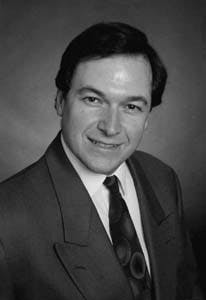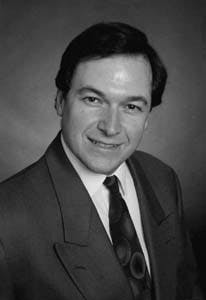Steven A. Tedesco, Sherri Bretz
Atoka Geochemical Services Corp.
Englewood, Colo.
The use of surface geochemistry is becoming more prevalent in oil exploration, especially for focusing specific target areas for 2D and 3D seismic surveys.
Presented here are two surface geochemical surveys utilizing the iodine method in delineating Upper Minnelusa sands of Permian age in the Powder River basin and Lodgepole Waulsortian-like mounds of Mississippian age in the Williston basin (Fig. 1)(57774 bytes). Both plays are relatively simple seismically, but focusing the geophysical survey is critical in minimizing exploration and drilling costs.The presence of a seismic anomaly may imply the presence of a trap but does not imply the presence of oil. The presence of a surface geochemical anomaly does not imply the presence of a trap but only the presence of oil at depth.
SURFACE GEOCHEMISTRY
Iodine is an indirect indicator of a petroleum accumulation at depth. Increases in iodine anomalies are caused by the presence of petroleum seepage in the upper part of the soil section.
In the very shallow surface, less than 10 ft, a reaction occurs between hydrocarbons and iodine under sunlight forming iodorganic compounds. The source of the iodine is either from minerals in the soil and/or from the atmosphere with ultraviolet light as the initiator of the reaction.1
Any iodine in the subsurface could not migrate far in the presence of hydrocarbons and due to its large molecular size. The compounds that form in the soil remain solid and are relatively difficult to remove.
Normal soil iodine background typically ranges from 0.1-2.0 ppm but can be in certain instances much higher. Anomalous areas worth investigating are typically greater than 50% above the background average or more than one standard deviation above the mean. Typically, anomalous areas are usually two to 20 times the average background values.
It is important to take a sufficient number of samples to determine approximately the range of background values. This usually requires a grid survey that is two to four times larger than the target size.
Line surveys are usually misleading and inconclusive. Drillsite surveys are also inadequate and limited unless they can be related to data from a larger survey. The smaller the area a sample survey covers the less likely an meaningful interpretation can be made.
LODGEPOLE PLAY, WILLISTON BASIN
The Waulsortian-like mounds of the Lodgepole formation (Mississippian age) have recently become a prime target in and around the town of Dickinson in Stark County, N.D.
Production from the Lodgepole exists in other parts of the Williston basin, specifically in Manitoba and Saskatchewan, with minor production in other parts of North Dakota and Montana.
Conoco Inc. established production from these mounds by deepening wells in Dickinson field, which produces from the Tyler sand, in Sec. 31- and 32-140n-96w. Depth to the mounds in the Lodgepole is 9,700-10,050 ft.
The Conoco 75 Kadrmas and 79 Frenzel flowed 960 b/d of oil, 180 Mcfd of gas, and no water and 1,452 b/d of oil, 735 Mcfd of gas, and no water, respectively.
Prior to the drilling of the recent wells by Raymond T. Duncan and Conoco in 139n-97w an iodine survey was acquired, followed by a 3D seismic survey. The original survey is proprietary.
Recent flow rates from wells drilled within the iodine survey presented here have been reported at 1,600-3,000 b/d of oil with associated gas.2 3
The Lodgepole formation of the Madison group in the Williston basin consists of shallow marine shales and carbonates.4 5 The Waulsortian mounds are in the lower part of the formation and until the recent discoveries were not considered to be a potential target on the U.S. side of the Williston basin.6
The mound build-ups developed on basement highs that are present along a break in paleoslope that was caused by faulting during deposition. Reactivation of the basement faults caused dissolution of Devonian salts that formed structural highs upon which the mounds formed.
Extensive faults are present in the area of the Duncan and Conoco discoveries.6 The shelf break in the area of these Lodgepole mounds is coincident with a series of north-trending lineaments that are basement related.
A second surface geochemical survey was done shortly after the new field discovery in Northwest 11-139n-97w (Fig. 2)(73092 bytes). The wells in this area produce from a Waulsortian-like mound in the Lodgepole.
Only wells that have penetrated the Lodgepole are on the map. Wells that have tested or produced from the shallower Tyler (Pennsylvanian) sand have been left off the map.
The iodine data match existing production and indicate a halo type anomaly. The iodine survey has an average background value of 0.8 ppm and anomalous values beginning at 1.5 ppm. The survey was contoured at intervals of 1.5, 2.0, and 2.5 ppm iodine. The survey indicates a large anomaly overlying the existing and reported producing wells.
Despite the high flow rates of the wells, the anomaly is considered average in intensity in terms of iodine anomalies. This suggests that the intensity of an anomaly at the surface is controlled by the amount of petroleum seeping to the surface. To date, evidence suggests that every petroleum accumulation leaks but the degree of leakage is related to the extent of micro-fracturing, micro-porosity, and micro-permeability in the overlying section.
Iodine Survey Over Minnelusa Extension chart (69899 bytes)
MINNELUSA PLAY, POWDER RIVER BASIN
The second example is located near Hilda field in the northern part of the Minnelusa play in the Powder River basin. The survey presented here is across a recent field extension to Hilda field in Northeast 36-52n-69w.
The sands of the Minnelusa represent a series of channels and dune systems that were deposited in Permian times. A eustatic drop in sea level during Upper Minnelusa times caused the sea to withdraw from the Lusk embayment to the southeast. Fluvial drainage incised deep channels and deposited dunes.
The sea level rose and drowned the valleys, filling them with Opeche shale. Sandstones are typically 10-60 ft thick, and there are four cycles, A to D. The target here is the Lower B sand. Minnelusa traps occur because of an erosional unconformity at the top that is sealed by the Opeche shale.
The surface geochemical survey was not considered in the drilling of the prospect. The iodine survey is overlain on a structure map on top of the Opeche shale. The field extension was discovered by using 3D seismic.
As can be seen from the survey, the iodine indicates an anomaly in the area of drilling. The average iodine back- ground is 0.4 ppm and anomalous, Values start at 1.0 ppm. The survey was contoured at the following intervals: 1.0, 1.5, and 2.0 ppm iodine.
The anomaly is an apical type, whereas the anomaly over the Lodgepole case history is more halo in nature. The type of anomaly is not necessarily important as it is to define the approximate limits of seepage for targeting by seismic. Because the one well in the field has produced for 10 years, the geochemical anomaly at the surface is not as intense as those found over reservoirs prior to discovery.
CONCLUSIONS
The purpose of any surface geochemical survey is to focus exploration efforts in specific areas that indicate petroleum seepage and avoid those areas that do not.
Any surface geochemical anomaly needs to be followed by seismic in order to provide a specific drilling target. If a surface geochemical survey is properly designed and implemented, when no anomaly is present, then to date regardless of the type of method used the results have been dry holes.
If a surface geochemical anomaly is present, the intensity, areal extent, and quality of the anomaly cannot determine the economic viability of the accumulation at depth, but there is a significant increase in the success rate.
The best utilization of these methods is to determine areas where there is no possibility of finding petroleum and focusing on areas that do. In the case of the Lodgepole and Minnelusa plays, surface geochemistry allows a low cost approach and helps focus and minimize 2D and 3D survey costs.
REFERENCES
- Tedesco, S.A., Surface geochemistry in petroleum exploration, Chapman and Hall, New, York, 1994.
- Rocky Mountain Region Report-Wyoming, petroleum Information Corp., Denver, Vol. 68, No. 14, Jan. 24, 1995.
- More details on Duncan's Lodgepole discovery, Stark County, N.D. Rocky Mountain Oil Journal, Vol. 75, No. 2, Jan. 13, 1995.
- Heck, T.J., Depositional environments and diagenesis of the Mississippian Bottineau interval (Lodgepole) in North Dakota, unpublished master of science thesis, University of North Dakota Grand Forks, 1979, 277 p.
- Young, H.R., and Rosenthal, L.R.P., Stratigraphic framework of the Mississippian Lodgepole formation in the Virden and Daly oil fields of southwestern Manitoba, in Sixth international Williston basin symposium, Christopher, J.E., and Haidl, F.M., eds., Saskatchewan Geological Survey Special Publication No. H, Regina, 1991, pp. 113-132.
- Burke, R., and Diehl, P., Waulsortian mounds and Conoco's new Lodgepole well, North Dakota Geological Survey newsletter, Vol. 20, No. 2, 1993, pp. 6-17.



